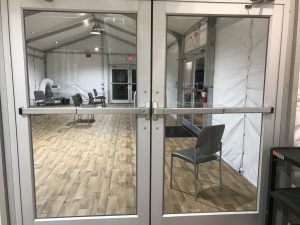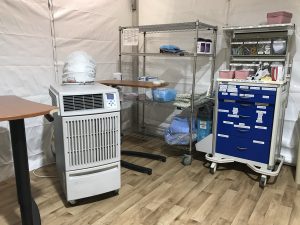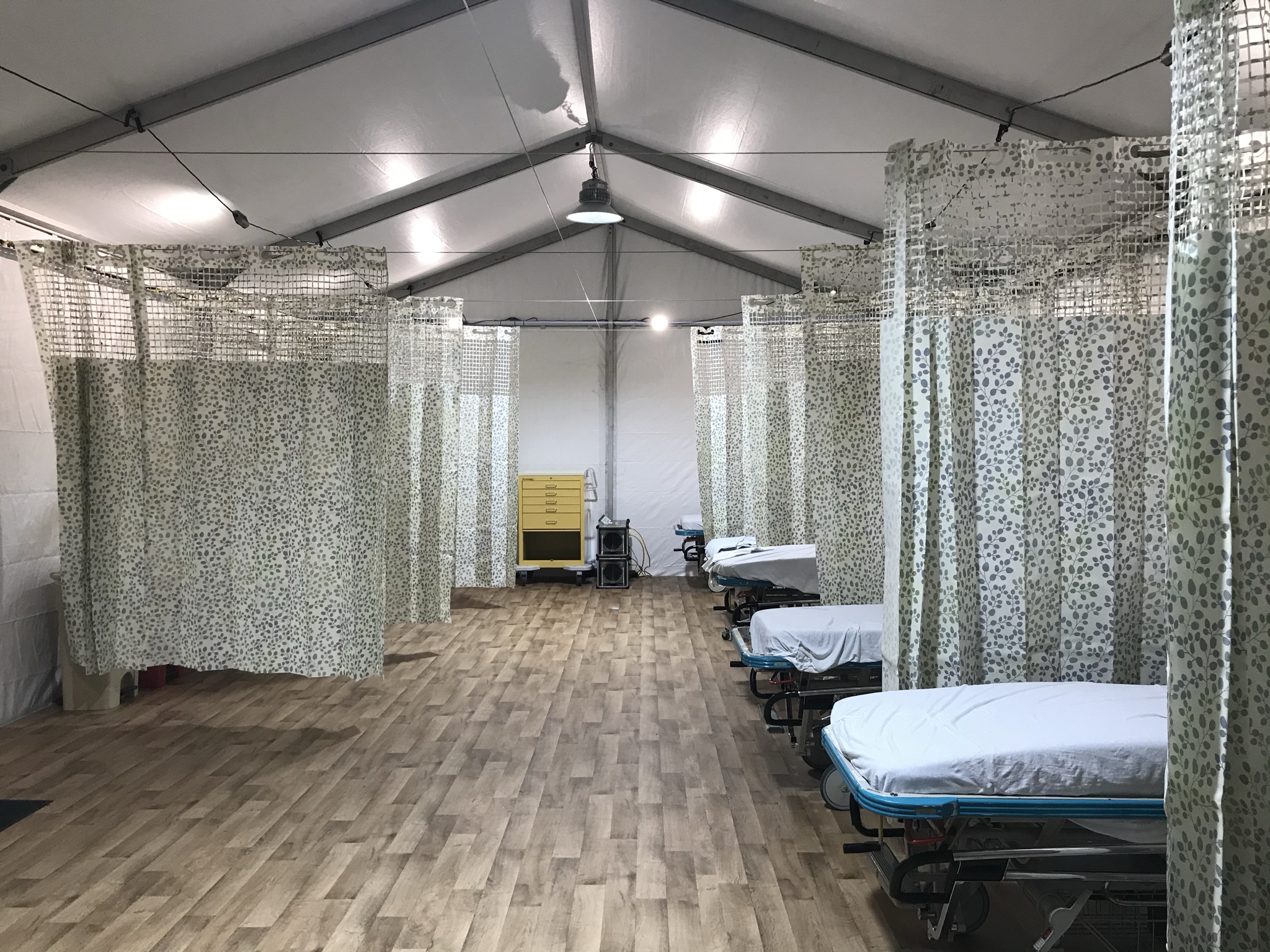Tents Act as New Front Doors to Help with COVID Care
For years, many hospitals stored large, camping-style tents and put them up occasionally as part of emergency drills or surge events. These tents were meant to be a quick, temporary solution to help triage and treat an overflow of patients, whether from seasonal flu or an emergency such as an earthquake or plane crash. During the early stages of the COVID-19 pandemic, many of these tents were used as a place to assess patients and determine the severity of their symptoms, to keep patients with potential COVID-19 symptoms separate from others, or to provide testing for the coronavirus. Tents are practical places for temporary care but are often not exactly comfortable.
At least one Northern California hospital is changing that.
Sutter Santa Rosa Regional Hospital, an acute-care facility nestled in the state’s Wine Country, this month erected a new 1,600-square-foot tent outside its emergency department. The structure is complete with power and electricity, elevated hardwood floors to keep out rainwater, and two HVAC systems for cooling and heating.

One side of the tent is an 18-person waiting room, which allows for physical distancing.
Sutter Santa Rosa’s tent expands the hospital’s capacity to treat an additional 40-50 patients per day and was paid for through a private donation. It replaces a smaller tent that was put up in March 2020, when COVID-19 virus cases were first reported in Sonoma County, and a second open-air tent that was added in the fall.
“This tent will allow us to see many more patients in a more controlled, comfortable and healing setting,” said Sutter Santa Rosa emergency department registered nurse Rick Moonman.
Typically, people who arrive at hospitals, whether they are symptomatic for COVID-19 or not, are first examined in the emergency department. Sutter Santa Rosa patients are now initially assessed by a triage nurse in a comfortable and physically-distanced area at the entrance to the new tent.
In addition to the tent’s waiting room, it offers eight treatment bays, an area for supplies and a small nurse’s station.
“One of the biggest obstacles we’ve had to address this year is space and the ability to see the number of patients we’re now seeing,” Moonman said. “Our hospital is now better positioned for an emergency surge.”

Nearby supplies allow medical staff to provide patient care while inside the tent.





